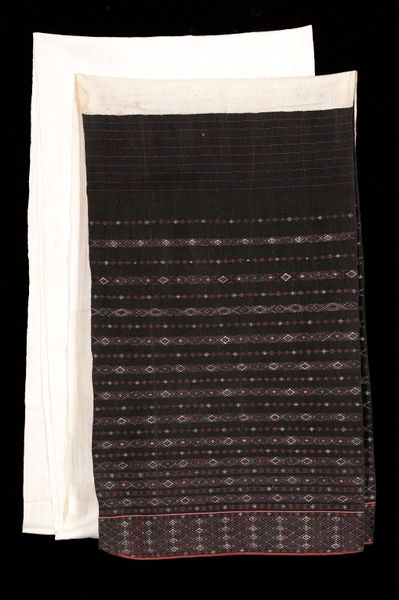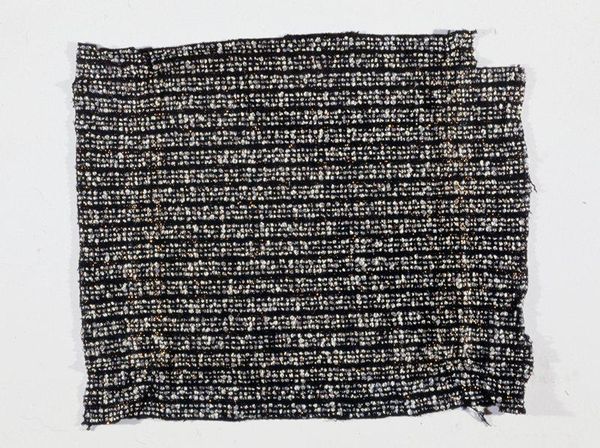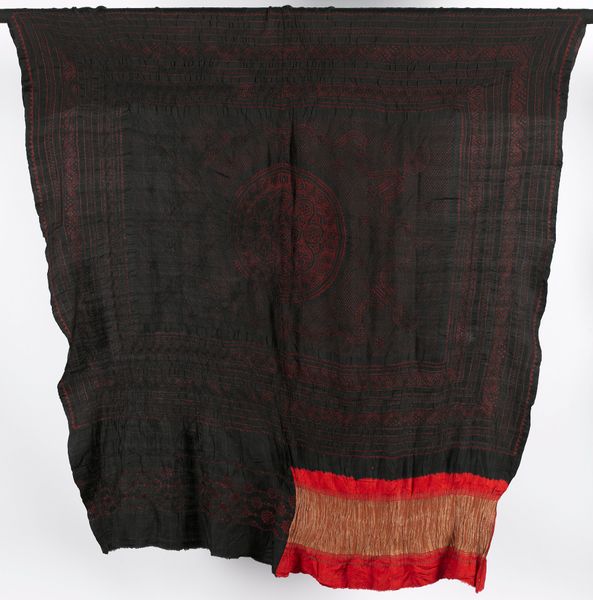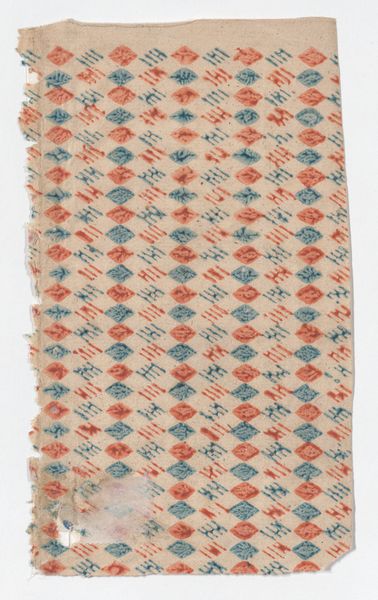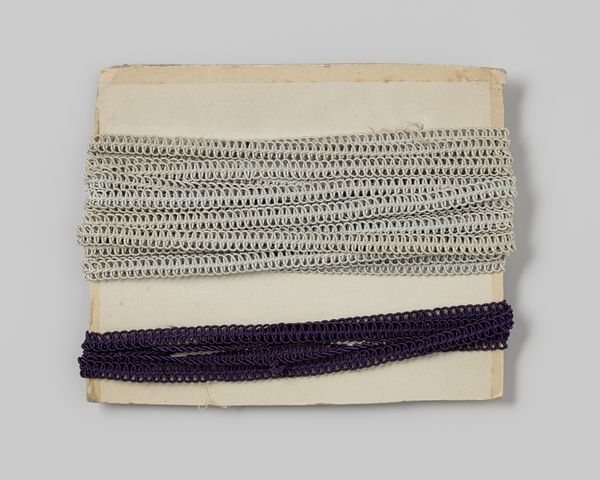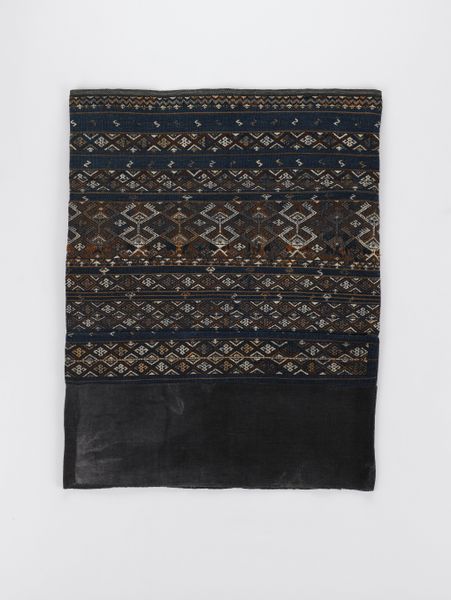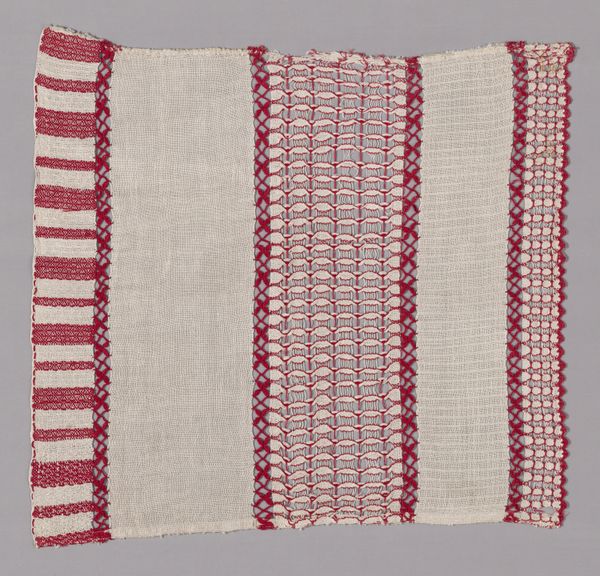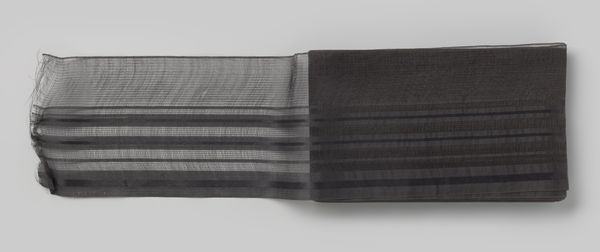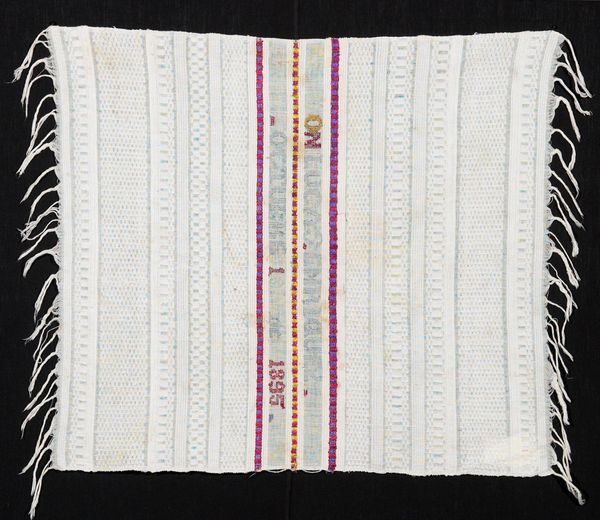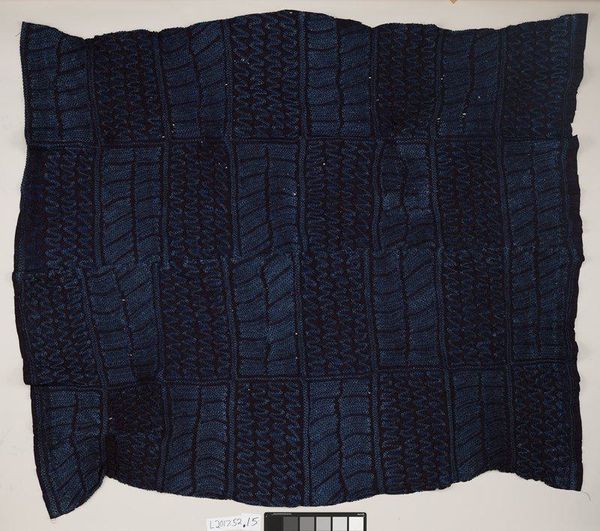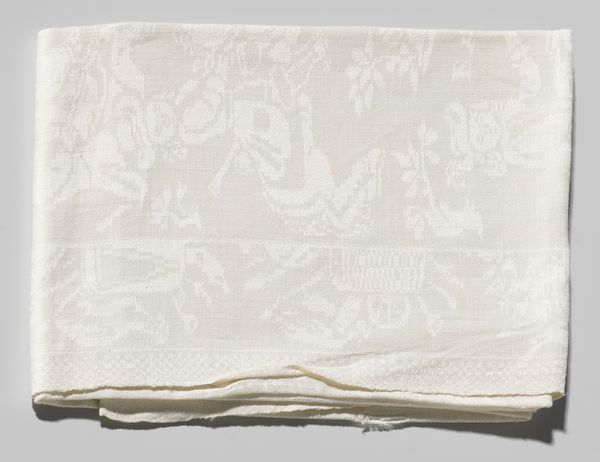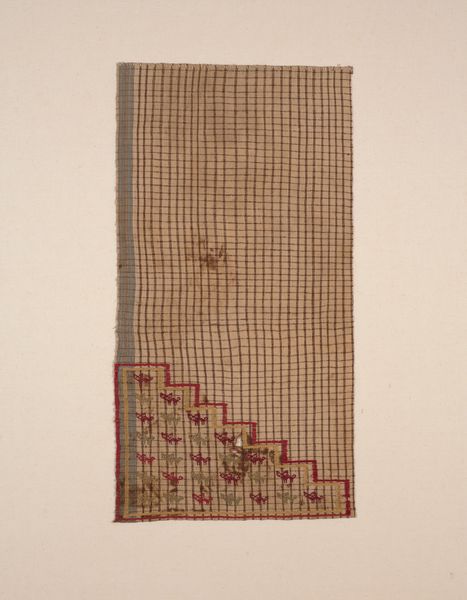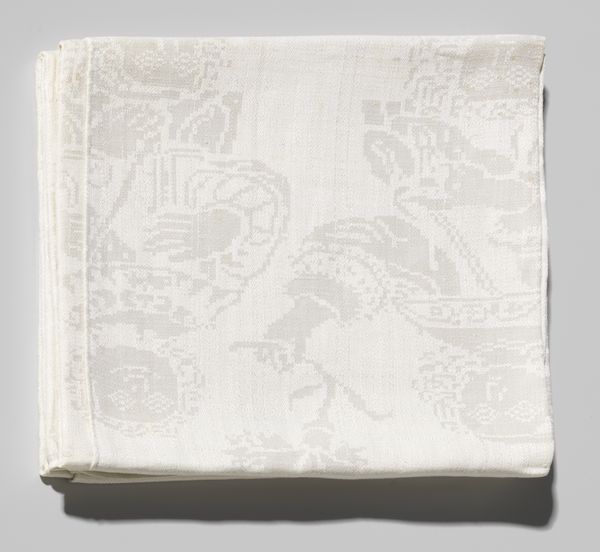
Copyright: Howardena Pindell,Fair Use
Curator: Howardena Pindell created "Separate but Equal Genocide: AIDS" in 1992. It’s a mixed-media piece, using collage and textiles to confront a very painful chapter in recent history. My first thought is the scale, it is quite striking as well. Editor: Immediately, the American flag motif is striking, though visually distorted and doubled. The palette is muted, almost bleached, except for those bands of stark red at each side which visually trap the entire surface. There is something deeply unsettling and sorrowful embedded in this muted surface. Curator: It’s unsettling because Pindell’s work consistently explores themes of social injustice, identity politics, and history painting, and does so with an intense emotional weight. In this case, the American flag, a symbol of freedom and equality, is deconstructed and repurposed to expose the government’s inadequate response to the AIDS crisis and, by extension, the broader social indifference toward the epidemic's victims. Editor: Precisely. By employing the imagery of the flag, she forces us to reconsider its implied values against the backdrop of widespread suffering. The formal components enhance this feeling: notice the textured surfaces, pieced together, creating a fragmented image mirroring society’s broken promises, wouldn't you agree? The texture of this particular work creates a disturbing tactile tension with such loaded symbolism. Curator: The names woven into the flag’s design—aren't they very symbolic of cultural memory here? Each one represents a life lost, a human being reduced to a name. It's about reclaiming individual identity, which AIDS tried to erase, as the diseased were cast aside and reduced to labels in the public consciousness. She ensures their memory persists. Editor: It is impossible not to observe that this memorial echoes other memorials such as Maya Lin’s Vietnam memorial or even a woven tapestry; I wonder if those echoes help cement the cultural resonance? How does the history of Modernist assemblage intersect here? Curator: I find her act of reappropriation so profound. The original symbolism of the flag, meant to unite, becomes a symbol of division, discrimination, and ultimately, death, but also one of perseverance and remembrance. This tension reflects our ongoing struggle with equality. Editor: The emotional core, made accessible through sharp aesthetic strategy, demands we actively question dominant structures. A haunting visual piece demanding further exploration and debate on our culture, indeed. Curator: This really exemplifies how art can force a society to reckon with uncomfortable truths while preserving important legacies.
Comments
No comments
Be the first to comment and join the conversation on the ultimate creative platform.
